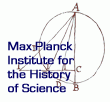(Al)chemical Books
The historical term 'chymistry' refers comprehensively to everything we might tend to call chemistry or alchemy today; these two words – and the practices they denote – were not seen as separate before the end of the seventeenth century. The roughly one hundred titles in Ximenez's library that are clearly chymical in nature divide almost evenly between chemiatria and chrysopoeia. These books, both practical and theoretical, in total comprise roughly twelve percent of his library; if the more strictly medical books are added, this proportion rises to about eighteen percent. The volumes relating to chemiatria include 'how-to' books such as Jacob Besson's Art of Extracting Oils, as well as several books specifically on distillation, like Hermanni's 1552 Distilleerboeck, Rubeus's De distillation (1585), and a Distillierung diversorum auctorum. There are also twelve herbals, which would have provided information about the identification and medical uses of plants. Handbooks on how to prepare chymical medicines are also present, notably Jean Beguin's Tyrocinium chymicum (1612) and both 1597 and 1606 editions of Andreas Libavius's Alchemia, the latter of which provides descriptions of apparatus and methods, as well as instructions for how to outfit laboratories. The inventory also lists books on specific medicaments or particular approaches to chymical medicine, such as John of Rupescissa's On the Quintessence (1597) and Angelo Sala's Anatomia vitrioli (1613) and four books on potable gold, a sought-after panacea. There are over twenty titles by Paracelsus including a ten- and a four-volume set of Works, as well as texts by prominent Paracelsians such as Quercetanus (Joseph du Chesne), Petrus Severinus, Gerhard Dorn, Oswald Croll, and Johannes Hartmann, who had just in 1608 been installed at the University of Marburg as the first professor of chemiatria. Significantly, Ximenez's library also contained anti-Paracelsian texts, including numerous works by the arch-antiparacelsian Libavius. Thus we cannot conclude that Ximenez was a committed Paracelsian himself, only that he was interested in the new Paracelsian medicines, which he may or may not have practiced alongside more traditional methods of chymically preparing curatives.
The books dealing with the preparation of the Philosophers' Stone, the material to be prepared in a laboratory that when melted with base metals could transmute them quickly into gold or silver, include both classical and recent works. Classical authors like Geber, Morienus, Artephius, and the pseudo-Lull are well represented, as are important collections of chrysopoetic works produced in Ximenez's day, such as the first four volumes of the Theatrum chemicum, the Artis auriferae, and the Verae alchemiae artisque metallicae. Also in this category are then recent works of chrysopoeia, such as books by Gaston Duclo and the pseudonymous Basilius Valentinus. In the case of the chrysopoetic material, as with the Paracelsian material, there are also the notable anti-transmutational works of Nicholas Guibert, indicating once again that Ximenez read works on both sides of the hotly-disputed questions about alchemia.
Literature
Principe, Lawrence M. The Secrets of Alchemy. Chicago: University of Chicago Press, 2013.


